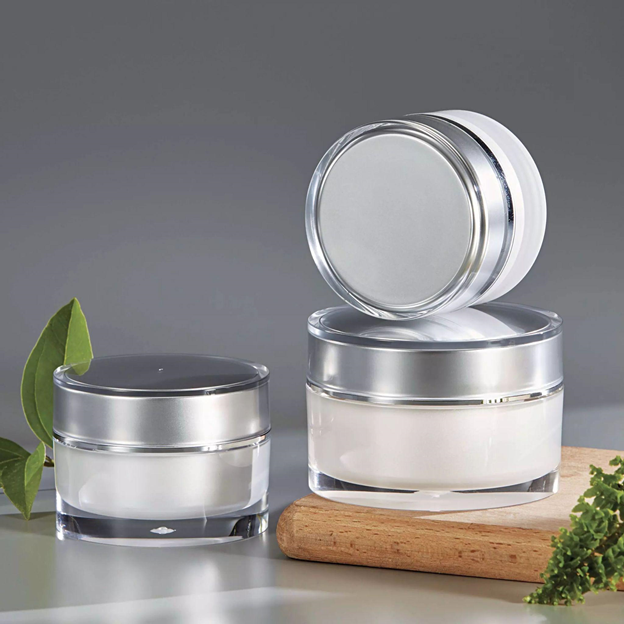A cream jar is a vital component in the world of skincare and cosmetics. Its primary function is to house various creams, balms, and lotions, preserving their integrity and ensuring the safe and efficient delivery of the product to the consumer.
Beyond its practicality, the design and quality of the cream jar are essential for consumer appeal, as it also serves as a tool for branding and marketing.
Types of Cream Jars
Cream jars come in several different materials, including plastic, glass, and acrylic. Each material has its advantages, making the choice of container largely dependent on the type of cream it is meant to house.
- Plastic Cream Jars: These are lightweight, durable, and often cost-effective. Plastic jars are particularly popular for mass-market products. Plastic cosmetic jars can be molded into a variety of shapes and sizes, providing design flexibility. They are commonly equipped with tamper-evident seals to enhance product safety.
- Glass Cream Jars: Glass jars have an elegant, high-end appeal, often used for luxury skincare products. While heavier and more fragile than plastic, glass is perceived as more premium, which is why it’s a common choice for high-end brands. Glass cosmetic jars help maintain the product’s integrity by providing an airtight seal.
- Acrylic Cream Jars: Acrylic jars offer a balance between durability and elegance. Acrylic jars are ideal for products that require frequent handling while maintaining an attractive look. They are also shatter-resistant, making them a durable alternative to glass.
Design and Functionality
Beyond materials, the design of the cream jar plays a significant role in its appeal and functionality. The typical cream jar has a wide opening for easy access to the product. The inner lid or seal is often used to prevent contamination and prolong the product’s shelf life by minimizing exposure to air. For convenience, many cream jars come with spatulas or small scoops that allow consumers to retrieve the product without touching it, maintaining hygiene and preventing bacterial growth.
The jar’s closure system is another important feature. Some jars come with screw-on lids, which provide a tight seal to prevent spills and contamination. Other jars may feature snap-on lids for ease of use. These closures must be tightly fitted to ensure the product inside remains fresh and uncontaminated.
The size of cream jars also varies widely. For high-end products, smaller jars (typically ranging from 15ml to 50ml) are common, as they create an impression of exclusivity and luxury. In contrast, larger jars (100ml and above) are typically found in more mainstream, mass-market skincare products that aim to provide value for money.
Branding and Aesthetic Appeal
The visual design of the cream jar plays a crucial role in attracting customers. The exterior is often adorned with labels, logos, and artwork that reflect the brand’s identity. As skincare and cosmetic products are as much about beauty as they are about function, a well-designed jar can make a significant impact on the overall aesthetic of a product. Customization options such as embossing, color treatments, and unique shapes make the jar more distinguishable on store shelves.
Sustainability Considerations
In response to the growing demand for eco-friendly products, the packaging industry has introduced more sustainable options. Cream jars can be made from recycled materials or designed to be refillable to minimize waste. Many brands are also turning to glass and other materials that are recyclable, encouraging consumers to dispose of them responsibly.
Conclusion
The cream jar, though often overlooked, is a key player in the skincare and cosmetics industries. Its role extends far beyond mere containment; it is integral to product protection, convenience, aesthetics, and branding. Whether it’s a luxurious glass jar or a practical plastic one, the cream jar remains an essential packaging solution, offering both functional and marketing advantages. With increasing attention to sustainability, the future of cream jars may see even more innovations that align with the growing consumer demand for environmentally friendly products.

